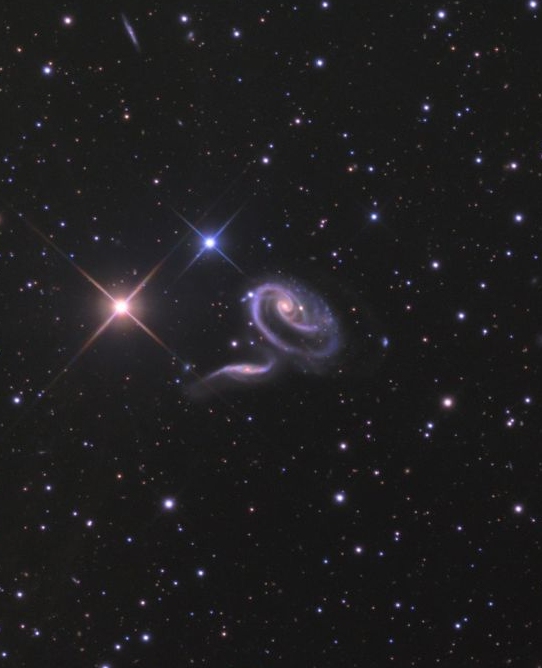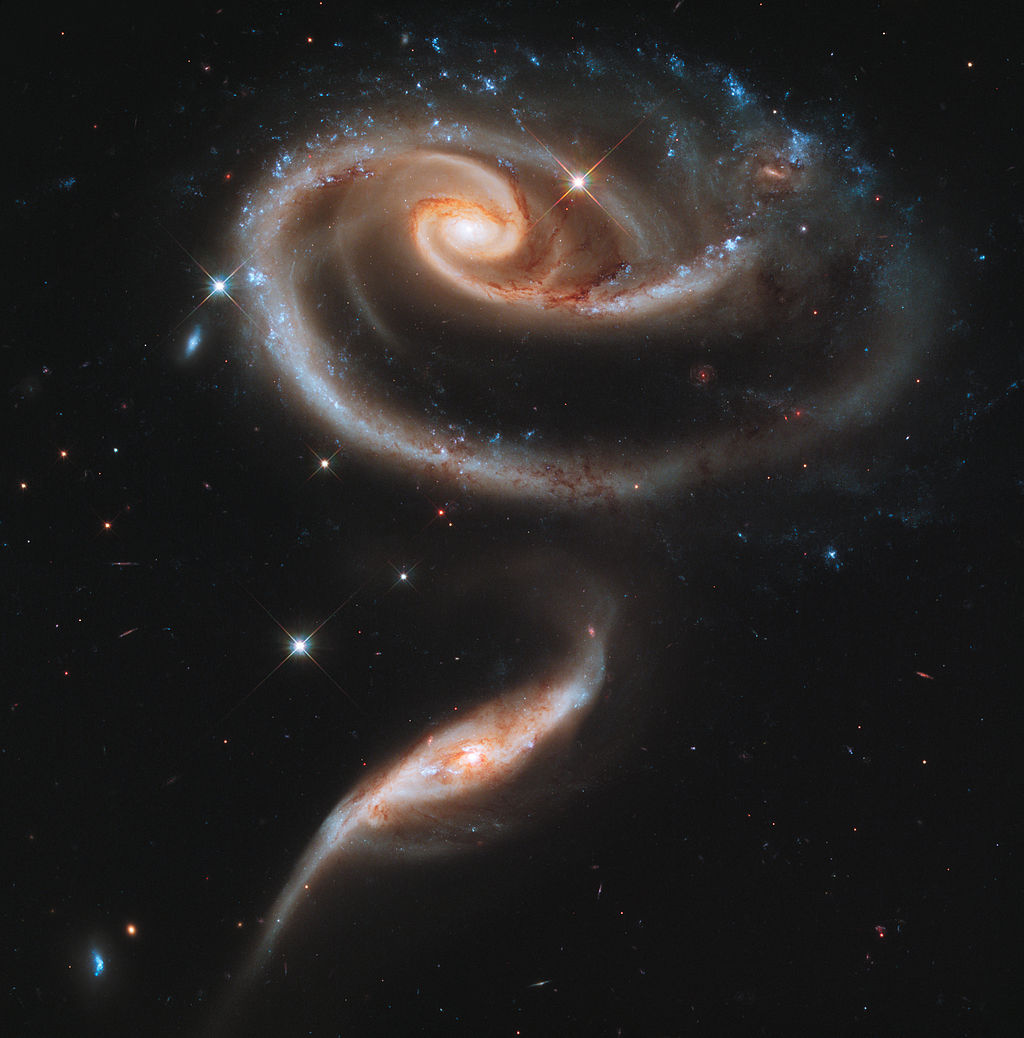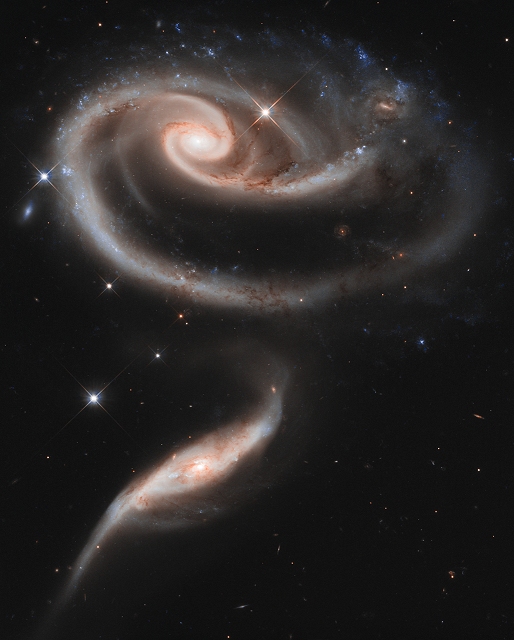It looks like you're using an Ad Blocker.
Please white-list or disable AboveTopSecret.com in your ad-blocking tool.
Thank you.
Some features of ATS will be disabled while you continue to use an ad-blocker.
16
share:
A nice picture of comet lovejoy taken on January 31,2015 but what`s that thing in the background?
You can see the tiny stars in front of it so it must be further away and behind those far away stars and it must be massive, is that a nebula?


spaceweathergallery.com...
You can see the tiny stars in front of it so it must be further away and behind those far away stars and it must be massive, is that a nebula?


spaceweathergallery.com...
a reply to: Tardacus
It could be a nebula. I'm not sure why you are surprised about the size.
This is a picture taken with a telescope, so the nebula (or whatever) is magnified. There are "large" nebulae you can easily see with a moderate telescope/binoculars -- and even with the naked eye, such as the Orion Nebula.
If Lovejoy was photographed telescopically like this with the Orion Nebula in the backdrop, the Orion Nebula would look even bigger than whatever this object is.
It could be a nebula. I'm not sure why you are surprised about the size.
This is a picture taken with a telescope, so the nebula (or whatever) is magnified. There are "large" nebulae you can easily see with a moderate telescope/binoculars -- and even with the naked eye, such as the Orion Nebula.
If Lovejoy was photographed telescopically like this with the Orion Nebula in the backdrop, the Orion Nebula would look even bigger than whatever this object is.
edit on 2/1/2015 by Soylent Green Is People because: (no reason given)
a reply to: Soylent Green Is People
And even, when it's really dark out, M31. Much larger than the Orion nebula (but not as bright).
She covers 4º of the sky. That's eight times larger than the Moon.
www.noao.edu...
and even with the naked eye, such as the nebula in Orion.
And even, when it's really dark out, M31. Much larger than the Orion nebula (but not as bright).
She covers 4º of the sky. That's eight times larger than the Moon.
www.noao.edu...
I'll take a stab at it. Depending where it was taken from. At that time spiral galaxy NGC925 was in view. And still is. It's not a bright galaxy. It's
in constellation Triangulm, about 45 million light years away.
The other galaxy in the vicinity is NGC891. From our view it is a flat disk. With a raised center. About 30 million light years. It's part of the NGH1023 group or local Super Cluster. In the last couple of days it too could be the suspect galaxy in the photo.
Right now from the north eastern United states, C/2014 Lovejoy is between both NGC925 and NGC891.
Great photo OP!
NGC891
robgendler.astrodigitals.com...
NGC925
www.noao.edu...
The other galaxy in the vicinity is NGC891. From our view it is a flat disk. With a raised center. About 30 million light years. It's part of the NGH1023 group or local Super Cluster. In the last couple of days it too could be the suspect galaxy in the photo.
Right now from the north eastern United states, C/2014 Lovejoy is between both NGC925 and NGC891.
Great photo OP!
NGC891
robgendler.astrodigitals.com...
NGC925
www.noao.edu...
edit on 1-2-2015 by Bigburgh because: (no reason given)
edit on 1-2-2015 by Bigburgh because: (no reason
given)
edit on 1-2-2015 by Bigburgh because: (no reason given)
If you look at the end of the comets tail. You will see the other galaxy.
It's definitely a spiral galaxy, nebulae don't usually have such long spiraling structures.
I've tracked it down using Stellarium and Sky-Map.com
It's a galaxy called PGC 8961 ( Sky-Map link) in the constellation Andromeda. You can see it interacting gravitationally with a smaller galaxy PGC 8970.
Here's a cool photo of both of them:

Galaxies appearing in photos of comets is nothing new or incredible, but it does make for great photos
Here's some more info about that pair of galaxies, from cseligman.com...
Hubble image:

I've tracked it down using Stellarium and Sky-Map.com
It's a galaxy called PGC 8961 ( Sky-Map link) in the constellation Andromeda. You can see it interacting gravitationally with a smaller galaxy PGC 8970.
Here's a cool photo of both of them:

Galaxies appearing in photos of comets is nothing new or incredible, but it does make for great photos
Here's some more info about that pair of galaxies, from cseligman.com...
PGC 8961 (with PGC 8970 = Arp 273)
A 13th-(B)magnitude spiral galaxy (type SA(s)b pec) in Andromeda (RA 02 21 28.7, Dec +39 22 32)
PGC 8961 and 8970 form an interacting pair of spiral galaxies, also known as Arp 273. Both galaxies are considerably distorted by their interaction, but PGC 8961's spectacular arms and brilliant clouds of hot, bright young stars caused by the interaction are more obvious because it is nearly face-on to our line of sight; while PGC 8970's form is more edge-on, and appears more a chaotic mess than its companion. Based on a recessional velocity of 7565 km/sec, PGC 8961 is about 350 million light years away. Given that and its apparent size of 2.2 by 1.4 arcmin, it is about 225 thousand light years across. This makes it more than twice the diameter and about ten times the volume (and most likely, mass) of our Milky Way galaxy.
Hubble image:

edit on 2-2-2015 by wildespace because: (no reason given)
originally posted by: wildespace
It's definitely a spiral galaxy, nebulae don't usually have such long spiraling structures.
I've tracked it down using Stellarium and Sky-Map.com
It's a galaxy called PGC 8961 ( Sky-Map link) in the constellation Andromeda. You can see it interacting gravitationally with a smaller galaxy PGC 8970.
Here's a cool photo of both of them:
Galaxies appearing in photos of comets is nothing new or incredible, but it does make for great photos
But, but....Aliens!
Just kidding. Good work identifying it. And you're absolutely right about such things making for beautiful images. No question about that....
originally posted by: AdmireTheDistance
Good work identifying it. And you're absolutely right about such things making for beautiful images. No question about that....
Thanks, it was quite a task of matching up the stars from photo with stars in Stellarium (the galaxy itself isn't marked there).
I've uploaded the full-scale (62.6 Mb) Hubble image to www.gigapan.com...
This is one gorgeous galaxy! And that Hubble image reveals dozens of even more distant galaxies behind it, some of which are very visibly redshifted.
By the way, the Hubble image isn't exactly true-colour, since they used ultraviolet filter for blue channel, blue filter for green channel, and orange-red filter for red channel. I've gone and re-processed the image to hopefully represent the real colours of the galaxy:

edit on 2-2-2015 by wildespace because: (no reason given)
a reply to: wildespace
Thanks for tracking it down and for those pics!
It kind of stood out on the comet picture even without zooming in so I had to take a closer look at it.The corkscrew shape in the comet picture was new to me I`ve never seen that before. Those hubble pictures are fantastic!
Thanks for tracking it down and for those pics!
It kind of stood out on the comet picture even without zooming in so I had to take a closer look at it.The corkscrew shape in the comet picture was new to me I`ve never seen that before. Those hubble pictures are fantastic!
I see it's already been tracked down. For future reference OP you can submit any photo like that to astrometry.net to get an instant solution on what
it is even if you know nothing about the location of the photo in the sky:
nova.astrometry.net...
Just download the "New FITS file" and open in SAOImageDS9 to get the exact coordinates of whatever it is you want to identify. You can then cross reference with an astronomical database like Simbad.
nova.astrometry.net...
Just download the "New FITS file" and open in SAOImageDS9 to get the exact coordinates of whatever it is you want to identify. You can then cross reference with an astronomical database like Simbad.
edit on 2-2-2015 by ngchunter because: (no reason given)
new topics
-
Any one suspicious of fever promotions events, card only.
The Gray Area: 4 minutes ago -
God's Righteousness is Greater than Our Wrath
Religion, Faith, And Theology: 4 hours ago -
Electrical tricks for saving money
Education and Media: 7 hours ago -
VP's Secret Service agent brawls with other agents at Andrews
Mainstream News: 8 hours ago -
Sunak spinning the sickness figures
Other Current Events: 9 hours ago -
Nearly 70% Of Americans Want Talks To End War In Ukraine
Political Issues: 9 hours ago -
Late Night with the Devil - a really good unusual modern horror film.
Movies: 11 hours ago
top topics
-
VP's Secret Service agent brawls with other agents at Andrews
Mainstream News: 8 hours ago, 9 flags -
Cats Used as Live Bait to Train Ferocious Pitbulls in Illegal NYC Dogfighting
Social Issues and Civil Unrest: 13 hours ago, 8 flags -
Electrical tricks for saving money
Education and Media: 7 hours ago, 4 flags -
HORRIBLE !! Russian Soldier Drinking Own Urine To Survive In Battle
World War Three: 17 hours ago, 3 flags -
Sunak spinning the sickness figures
Other Current Events: 9 hours ago, 3 flags -
Nearly 70% Of Americans Want Talks To End War In Ukraine
Political Issues: 9 hours ago, 3 flags -
Late Night with the Devil - a really good unusual modern horror film.
Movies: 11 hours ago, 2 flags -
The Good News According to Jesus - Episode 1
Religion, Faith, And Theology: 14 hours ago, 1 flags -
God's Righteousness is Greater than Our Wrath
Religion, Faith, And Theology: 4 hours ago, 0 flags -
Any one suspicious of fever promotions events, card only.
The Gray Area: 4 minutes ago, 0 flags
active topics
-
SETI chief says US has no evidence for alien technology. 'And we never have'
Aliens and UFOs • 47 • : andy06shake -
Any one suspicious of fever promotions events, card only.
The Gray Area • 0 • : Cavemannick -
God's Righteousness is Greater than Our Wrath
Religion, Faith, And Theology • 1 • : andy06shake -
Sunak spinning the sickness figures
Other Current Events • 7 • : xWorldxGonexMadx -
HORRIBLE !! Russian Soldier Drinking Own Urine To Survive In Battle
World War Three • 33 • : Degradation33 -
How ageing is" immune deficiency"
Medical Issues & Conspiracies • 34 • : angelchemuel -
Nearly 70% Of Americans Want Talks To End War In Ukraine
Political Issues • 13 • : Freeborn -
Mood Music Part VI
Music • 3101 • : ThatSmellsStrange -
VP's Secret Service agent brawls with other agents at Andrews
Mainstream News • 41 • : ThatSmellsStrange -
New whistleblower Jason Sands speaks on Twitter Spaces last night.
Aliens and UFOs • 55 • : baablacksheep1
16
